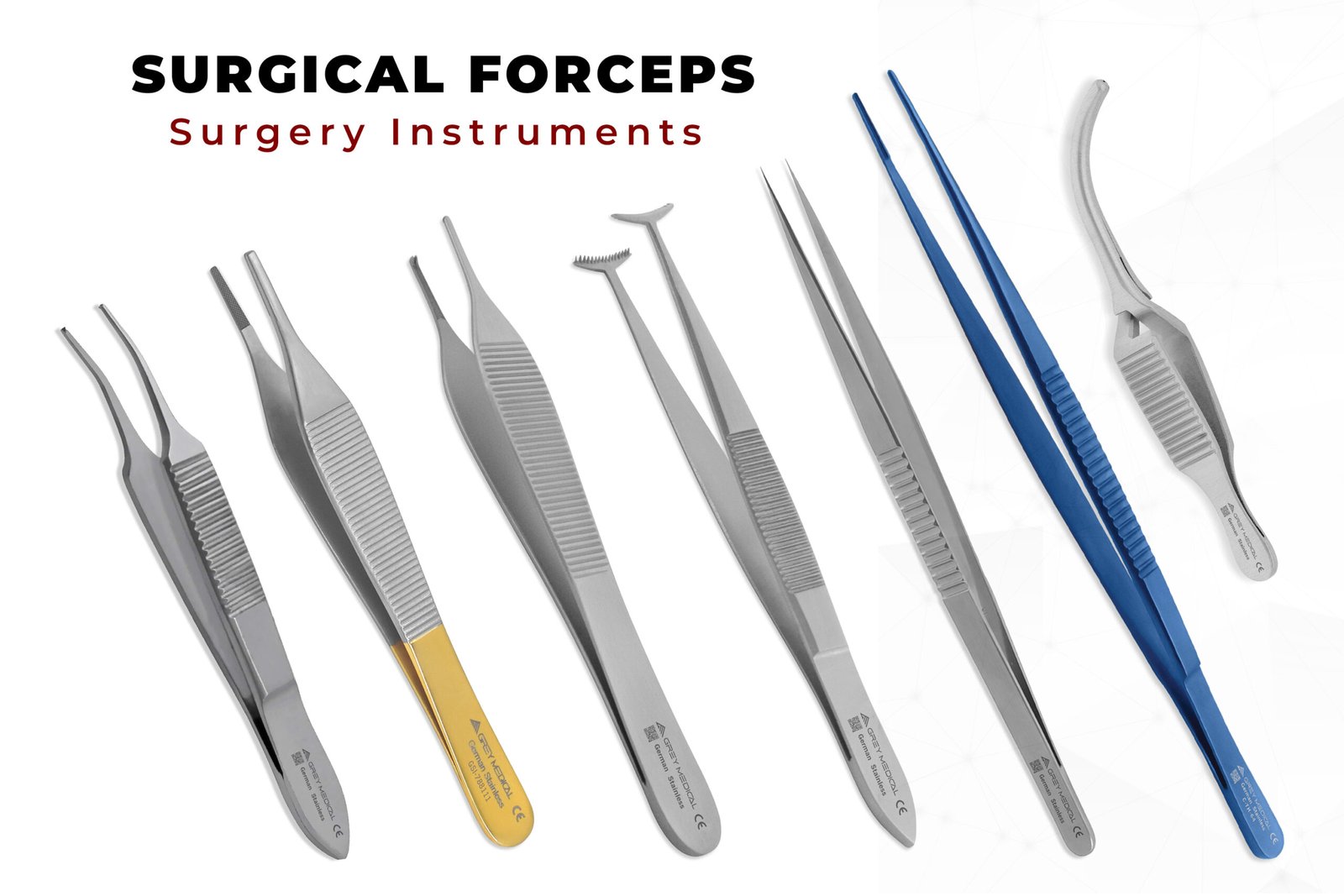Forceps are among the most essential surgical instruments used across a wide range of medical specialties. These handheld tools are designed to grasp, hold, and manipulate tissues, sutures, and other materials during surgical procedures. Their precision and versatility make them indispensable in operating rooms worldwide. GreyMedical, a privately owned medical technology company, is dedicated to innovation and excellence in the craft of surgical instruments, offering surgeons reliable and expertly engineered forceps that meet the highest standards of performance.

The Importance of Surgical Forceps
Surgical forceps play a crucial role in ensuring accuracy and control during delicate procedures. Whether used for grasping tissue, removing foreign bodies, or handling sutures, they provide surgeons with the ability to perform intricate maneuvers with minimal trauma. Their design varies depending on their intended use, which has led to the development of many specialized types of forceps. From general surgery to highly specialized disciplines such as neurosurgery, cardiovascular surgery, and ENT, forceps remain a cornerstone of modern surgical practice.
Tissue Forceps
Tissue forceps are specifically designed to handle delicate or dense tissues during surgical procedures. They are crafted to provide a firm grip without causing unnecessary damage. Variations include toothed forceps, which help secure tougher tissues, and smooth forceps, which are ideal for fragile structures. These forceps are particularly important in procedures where tissue preservation and precision are vital, such as plastic surgery or reconstructive surgery.
Hemostatic Forceps
Hemostatic forceps are one of the most recognizable categories of forceps, widely used for controlling bleeding during operations. By clamping onto blood vessels, these instruments allow surgeons to maintain a clear surgical field and minimize blood loss. They come in different designs, including curved and straight versions, each serving specific surgical needs. Commonly used in both minor and major surgeries, hemostatic forceps ensure that surgical procedures remain safe and controlled.
Dressing Forceps
Dressing forceps are used for handling sterile dressings, sponges, and other surgical materials. Their primary purpose is to avoid direct contact with wounds and surgical sites, reducing the risk of contamination. These forceps are crafted with smooth tips to ensure gentle handling of materials and to minimize any accidental injury to tissues. Dressing forceps are particularly valuable in postoperative wound care as well as during surgical procedures requiring sterile handling of materials.
Thumb Forceps
Thumb forceps, also known as non-locking forceps, are designed to be held between the thumb and fingers, allowing quick and precise handling of tissues or instruments. They do not have a ratcheting lock, which makes them suitable for tasks that require rapid grasping and releasing. These forceps are commonly used in procedures that demand speed and dexterity, including microsurgeries, suturing, and dissection. Their lightweight design ensures ease of use during prolonged surgeries.
Obstetrical Forceps
Obstetrical forceps are highly specialized instruments used in childbirth to assist in delivering a baby. Designed with curved blades to safely cradle the infant’s head, these forceps help guide the baby through the birth canal during complicated deliveries. Their role in obstetrics highlights the diverse applications of forceps across medical fields. Though modern obstetrics has evolved with technological advancements, obstetrical forceps continue to be vital tools in certain clinical scenarios.
Micro and Specialty Forceps
As surgical techniques have advanced, so too have the designs of forceps. Micro forceps are essential in neurosurgery, ophthalmology, and other microsurgical procedures where even the smallest movement requires extreme precision. These instruments are engineered with fine tips and lightweight construction to ensure accurate handling of delicate tissues and structures. Specialty forceps, such as sinus forceps, ear forceps, and vascular forceps, are tailored to meet the demands of specific procedures, ensuring surgeons have the right tool for each unique challenge.
Conclusion
Forceps are not simply tools; they are an extension of a surgeon’s hands, enabling precision, safety, and efficiency in the operating room. The variety of surgical forceps, from tissue and hemostatic to microsurgical and obstetrical designs, underscores their importance across nearly every branch of medicine. GreyMedical stands at the forefront of surgical innovation, combining craftsmanship and advanced technology to create instruments that surgeons can trust. By continually refining the design and performance of forceps, GreyMedical ensures that healthcare professionals are equipped with the best possible tools to deliver optimal outcomes for patients worldwide.